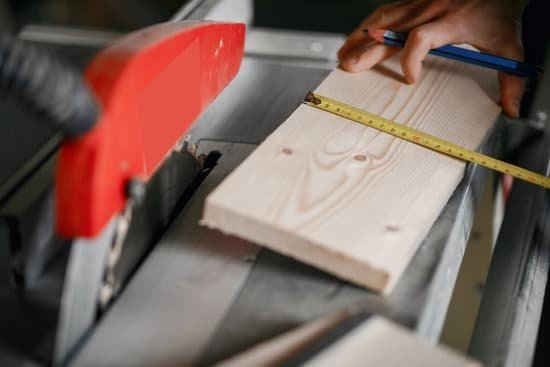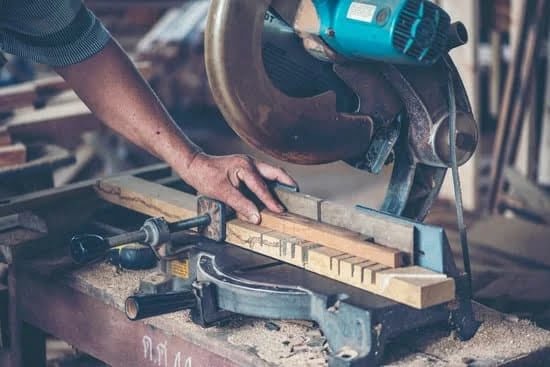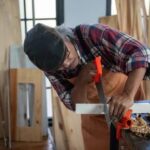Have you ever wondered how to equip a woodworking shop? Whether you are a beginner or a seasoned woodworker, setting up a functional and efficient woodworking shop is essential for any project. From selecting the right tools to organizing your workspace, there are several factors to consider when creating your woodworking haven.
Before diving into the world of woodworking equipment and machinery, it’s important to have a good understanding of the basics of woodworking. This includes knowledge of different wood types, grains, cuts, and joinery techniques. Understanding these fundamentals will not only help you in selecting the right tools for your shop but also in utilizing them effectively for various projects.
In this article, we will explore the essentials of setting up a woodworking shop, covering everything from planning and layout considerations to safety gear and equipment. Whether you’re looking to revamp an existing space or starting from scratch, this comprehensive guide will provide valuable insights on how to equip your woodworking shop for success.
Planning Your Woodworking Shop
When planning your woodworking shop, there are several important factors to consider in order to create a functional and efficient workspace. Whether you’re setting up a shop for personal projects or for professional use, careful planning will ensure that you have the right tools, equipment, and layout to work effectively. Here are some key factors to consider when planning your woodworking shop:
Factors to Consider:
1. Space: Determine the amount of space you have available for your woodworking shop. Consider the size of your tools and equipment, as well as the workflow you intend to have in your shop.
2. Workflow: Plan the layout of your woodworking shop with the flow of work in mind. Your workspace should facilitate a smooth transition between different workstations, such as cutting, assembly, and finishing areas.
3. Storage: Consider how you will store and organize your tools, lumber, hardware, and supplies. Utilize storage solutions such as shelves, cabinets, bins, and tool racks to keep your workspace tidy and organized.
4. Lighting and Ventilation: Ensure that your woodworking shop has adequate lighting and ventilation to create a safe and comfortable working environment.
5. Accessibility: Make sure that tools, machinery, and equipment are easily accessible in your woodworking shop. This includes considering the placement of power outlets and dust collection systems.
By carefully considering these factors when planning your woodworking shop, you can create a productive and enjoyable workspace that meets all of your woodworking needs.
Planning Your Woodworking Shop: Factors to Consider
- Space
- Workflow
- Storage
- Lighting and Ventilation
- Accessibility
Essential Tools for a Woodworking Shop
When setting up a woodworking shop, having the right tools is crucial for producing quality work. Whether you are a beginner or an experienced woodworker, having a comprehensive set of essential tools can make your work easier and more efficient. Here are some must-have tools for equipping a woodworking shop:
- Measuring and Marking Tools: Essential tools such as tape measures, squares, and marking gauges are indispensable for accurate and precise measurements in woodworking projects.
- Cutting Tools: A good set of cutting tools including saws, chisels, and planes are essential for shaping and refining wood. Power tools like circular saws, jigsaws, and table saws can also make cutting tasks faster and more convenient.
- Joinery Tools: Tools like routers, doweling jigs, and biscuit joiners are essential for creating strong and durable joints in woodworking projects.
- Sanding Tools: Sanding blocks, random orbital sanders, and belt sanders are vital for achieving smooth surfaces in your woodworking projects.
- Finishing Tools: Brushes, rollers, sprayers, scrapers, and other finishing tools are necessary for applying stains, paints, varnishes, and other finishes to wood projects.
Having these essential tools in your woodworking shop will allow you to tackle a wide range of projects with confidence and precision. Additionally there are many resources available online to help with this topic – sites like Woodsmith have equipment reviews including recommendations on which products you should consider when equipping your woodworking shop. Remember to invest in quality tools that will last longer as they will yield better results over time.
Safety First
When setting up a woodworking shop, safety should always be a top priority. This starts with acquiring the right protective gear and equipment to keep yourself safe while working with wood. One of the most important pieces of protective gear is a good quality dust mask or respirator.
Wood dust can be harmful when inhaled, so it’s crucial to invest in proper respiratory protection to avoid any health issues. Additionally, safety glasses or goggles are essential to protect your eyes from flying wood chips and debris.
In addition to protective gear, having the right safety equipment in your woodworking shop is crucial for accident prevention. A fire extinguisher should always be on hand in case of emergencies, and a first aid kit should also be easily accessible. It’s also important to have proper ventilation in your workshop, whether through the use of fans or dust collection systems, to prevent the buildup of hazardous fumes and dust particles.
Another vital aspect of safety is the use of push sticks and feather boards when operating machinery such as table saws and routers. These accessories help keep your hands at a safe distance from cutting surfaces, reducing the risk of accidental injuries. Being equipped with all these safety essentials will create a secure working environment for any woodworking project.
| Protective Gear & Equipment | Importance |
|---|---|
| Dust mask or respirator | Protects against inhalation of wood dust |
| Safety glasses or goggles | Protects eyes from wood chips and debris |
| Fire extinguisher & First aid kit | Emergency precautions for accidents |
| Ventilation systems & Fans | Prevents buildup of hazardous fumes and dust particles |
Organizing Your Workspace
When setting up a woodworking shop, one of the most important considerations is how to efficiently organize your workspace. This involves finding the right storage solutions and creating a layout that promotes productivity and safety. One key consideration is the accessibility of tools and materials, as well as creating designated areas for different tasks such as cutting, sanding, and assembly.
Storage solutions can include anything from cabinets and shelves to tool racks and bins. It’s important to consider not only the amount of storage needed but also how to best utilize the space available. Wall-mounted storage can be a great space-saver, while mobile tool carts allow for easy accessibility when moving around the shop.
In terms of layout tips, it’s essential to have a clear workflow in mind. Your woodworking shop should be organized in a way that minimizes unnecessary movement and keeps all essential tools within reach. Additionally, considering factors such as lighting and ventilation are crucial for creating a safe and comfortable working environment.
| Storage Solutions | Layout Tips |
|---|---|
| Cabinets | Clear workflow |
| Shelves | Optimizing space |
| Tool racks | Lighting considerations |
Power Up
When it comes to equipping a woodworking shop, choosing the right machinery and equipment is crucial for ensuring your projects are not only successful but also completed efficiently. From table saws to planers, there are several key pieces of machinery that every woodworking shop should have.
Essential Machinery for a Woodworking Shop
One essential piece of machinery for any woodworking shop is a table saw. This versatile tool is used for ripping, crosscutting, and even cutting different angles in wood. A band saw is also a must-have as it allows for more intricate and curved cuts. Jointers and planers are important for creating flat surfaces and smooth edges on lumber.
Choosing the Right Equipment
In addition to machinery, equipping your woodworking shop with the right equipment is equally important. Sanders such as belt sanders and orbital sanders are essential for achieving smooth finishes on wood. A drill press is also crucial for making accurate holes in wood. Furthermore, having a good quality router can help create decorative edges and joinery in your projects.
Investing in Quality
When choosing machinery and equipment for your woodworking shop, it’s important to invest in quality tools that will last. While budget-friendly options exist, these may not offer the same level of precision and durability as higher-quality tools. It’s worth investing in machinery and equipment that will stand the test of time and provide reliable performance.
By carefully selecting the right machinery and equipment for your woodworking shop, you can ensure that you have the necessary tools to bring your woodworking projects to life effectively and safely. Remember to prioritize quality when investing in these essential pieces for your workspace.
Stocking Up Your Supplies
Choosing the Right Lumber
When equipping a woodworking shop, one of the most important considerations is the type of lumber to stock. Different types of wood have different properties and are suitable for different projects. Hardwoods such as oak, maple, and walnut are known for their durability and attractive grain patterns, making them ideal for furniture-making.
On the other hand, softwoods like pine and cedar are more affordable and are commonly used for projects like outdoor furniture and framing. Consider the specific needs of your projects when stocking up on lumber to ensure that you have a variety of options available.
Essential Hardware for Woodworking
In addition to lumber, stocking up on essential hardware is crucial for any woodworking shop. This includes screws, nails, hinges, knobs, and other fasteners that will be needed for assembling your projects. It’s important to invest in high-quality hardware to ensure the longevity and sturdiness of your creations. Additionally, having a variety of sizes and types of hardware on hand will save time and prevent delays during the building process.
Consumables: Adhesives, Finishes, and Other Necessities
Lastly, a well-equipped woodworking shop should have a good supply of consumables such as adhesives, finishes, sandpaper, and other necessary items. Wood glue is essential for joining pieces together securely while finishes such as varnish or stain can enhance the appearance of your completed projects.
Sandpaper in various grits should also be readily available to smooth out rough surfaces before applying finishes. By keeping these consumables well-stocked in your workshop, you’ll be ready to tackle any project that comes your way with ease.
Budget-Friendly Options
Setting up a woodworking shop on a budget may seem like a daunting task, but with the right planning and strategy, it is definitely achievable. One of the first steps in equipping a woodworking shop on a budget is to prioritize the most essential tools and equipment.
Tools such as a table saw, drill press, and hand tools like chisels and mallets are crucial for most woodworking projects. By focusing on acquiring these essential tools first, you can start building your shop without breaking the bank.
Another budget-friendly option for setting up a woodworking shop is to consider purchasing pre-owned or reconditioned tools and equipment. Many woodworkers upgrade their tools over time, which means there is a good market for used tools that are still in great working condition.
This can be an excellent way to save money while still acquiring high-quality machinery for your shop. Additionally, attending local woodworking trade shows or auctions can also be a great way to find discounted tools and equipment.
Lastly, when setting up a woodworking shop on a budget, it’s important to be resourceful and creative when it comes to organizing your workspace. Utilize inexpensive storage solutions such as wall-mounted pegboards, shelves made from repurposed materials, or DIY cabinets.
By thinking outside the box and making use of affordable or even free options for storage and layout, you can keep your costs down while still creating an efficient and well-organized woodworking shop. With careful planning and consideration of these budget-friendly options, equipping a woodworking shop doesn’t have to be financially overwhelming.
Maintaining Your Woodworking Shop
In conclusion, setting up and maintaining a woodworking shop requires careful planning, investment in quality tools and equipment, and a commitment to safety and organization. By understanding the basics of woodworking and considering factors such as space, budget, and power supply, you can create a functional and efficient workspace.
In addition to essential tools for woodworking, it’s important to invest in protective gear and equipment to ensure safety while working with wood. This includes items such as safety goggles, ear protection, and dust masks to protect your eyes, ears, and respiratory system from potential hazards.
Furthermore, regular maintenance of your woodworking shop is crucial for keeping your equipment in top condition. This includes routine cleaning of machinery, sharpening of tools, and proper storage of supplies to prevent damage.
By following these tips and consistently maintaining your woodworking shop, you can create a safe and productive environment for all your woodworking projects. Whether you are just starting out or looking to upgrade your existing shop, these tips will help you equip a woodworking shop that meets your needs efficiently.
Frequently Asked Questions
What Do I Need to Set Up a Woodworking Shop?
Setting up a woodworking shop requires some essential tools and equipment. At the very least, you’ll need a workbench, various types of saws (such as table saw, circular saw, and jigsaw), a wood router, sanders, chisels, clamps, measuring tools (like squares and tape measures), and safety gear (goggles, ear protection, etc.).
You may also want to invest in specialty tools like a planer or jointer depending on the type of woodworking projects you plan to undertake.
What Are 5 Things You Should Not Do in the Woodshop?
When working in a woodshop, there are several important things to avoid. Firstly, never operate power tools without proper training or when feeling fatigued or impaired. Additionally, it’s crucial not to wear loose clothing or jewelry that could get caught in machinery.
It’s also important to refrain from using dull blades or bits in your tools as this can be dangerous. Moreover, do not leave power tools unattended while they are still running or plugged in. Lastly, avoid using the wrong type of wood for a specific project as this can compromise the safety and quality of your work.
What Machines Do I Need in a Woodworking Shop?
A well-equipped woodworking shop will typically include several machines essential for various tasks. These might include a table saw for making straight cuts and rips, a bandsaw for cutting irregular shapes and curves, a jointer for creating flat surfaces along the edges of boards, a planer for achieving uniform thickness on lumber pieces, and a wood lathe for turning wooden pieces into decorative objects like spindles or bowls.
Other useful machines might include routers for shaping edges and creating joinery details and sanders for achieving smooth surfaces on wood pieces before finishing them.

Hi everyone! I’m a woodworker and blogger, and this is my woodworking blog. In my blog, I share tips and tricks for woodworkers of all skill levels, as well as project ideas that you can try yourself.





